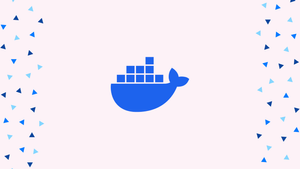Introduction
Dive into this resource for clear definitions, insights, and practical examples, empowering you to navigate the Docker landscape with confidence.
Embrace the power of Docker with our glossary as your go-to resource for all your Docker-related queries and curiosities.
Docker Terms
B
Base Image: A foundational starting point for Docker containers, including essential tools and configurations. It is created using a Dockerfile with the FROM scratch directive.
btrfs: btrfs (B-tree file system) is a copy-on-write filesystem option used by Docker for storage efficiency, snapshotting, and enhancing container performance.
Build: The action of building a container image based on the information and context provided by its Dockerfile, plus additional files in the folder where the image is built.
C
cgroups: Also known as control groups. It limits and isolate resource usage for processes.
Cluster: A collection of Docker hosts exposed as if it were a single virtual Docker host, so that the application can scale to multiple instances of the services spread across multiple hosts within the cluster.
Cluster Image: A single image that can be run on different platforms and architectures.
Copy-on-Write: A storage optimization technique that only writes changes to disk.
Container: An instance of a Docker image. A container represents the execution of a single application, process, or service. It consists of the contents of a Docker image, an execution environment, and a standard set of instructions.
Container image: A package with all the dependencies and information needed to create a container. An image includes all the dependencies (such as frameworks) plus deployment and execution configuration to be used by a container. Usually, an image derives from multiple base images that are layers stacked on top of each other to form the container's filesystem.
D
Docker: An operating system virtualized software platform that allows the developers to create, run and deploy applications easily.
Dockerfile: A text file that contains instructions for building a Docker image. It's like a batch script, the first line states the base image, and then follow the instructions to install required programs, copy files, and so on.
Docker Compose: A command-line tool and YAML file format with metadata for defining and running multi-container applications. You define a single application based on multiple images with one or more .yml files that can override values depending on environment.
Docker Desktop: Development tools for Windows and macOS for building, running, and testing containers locally. Docker Desktop for Windows provides development environments for both Linux and Windows Containers. The Linux Docker host on Windows is based on a Hyper-V virtual machine. The host for Windows Containers is directly based on Windows.
Docker Hub: Docker Hub is a centralized resource for working with Docker and its components. It provides the following services: A registry to host Docker images, User authentication, Automated image builds and workflow tools such as build triggers and web hooks, Integration with GitHub and Bitbucket, Security vulnerability scanning.
Docker ID: Docker ID is a unique identifier for users on Docker Hub, facilitating authentication and access management for Docker resources.
Docker Official Images: Pre-built images curated and maintained by Docker that follow best practices.
Docker Open Source Images: Community-contributed images available for public use and sharing.
Docker Personal: Free Docker plan for individual users and small projects.
Docker Pro: Paid Docker plan with additional features and support for professional use.
Docker subscription: Premium access to Docker Hub including additional features, support, and services.
Docker Team: Subscription for collaborative Docker development among team members.
Docker Trusted Content Program: Ensures authenticity and security of Docker images through verification.
Docker Trusted Registry (DTR): A Docker registry service that can be installed on-premises so it lives within the organization's datacenter. It's convenient for private images that should be managed within the enterprise.
Docker Verified Publisher Images: Images from trusted publishers with proven quality and reliability.
I
Images: Snapshots that contain a container's filesystem and configuration.
M
Multi-arch image: Supports multiple CPU architectures within a single image.
Multi-stage Build: Dividing a Dockerfile into multiple build stages for optimization.
N
Node: An individual server or virtual machine in a Docker Swarm cluster.
O
Overlay Network Driver: Enables inter-container communication across hosts.
Overlay Storage Driver: An efficient filesystem for managing layers of Docker images.
Orchestrator: A tool that simplifies the management of clusters and Docker hosts. Orchestrators enable you to manage their images, containers, and hosts through a command-line interface (CLI) or a graphical UI. You can manage container networking, configurations, load balancing, service discovery, high availability, Docker host configuration, and more.
P
Parent Image: Baseline image upon which another image is built.
R
Registry: A centralized resource for working with Docker and its components. It provides the following services: Docker ID, Docker Official Images, Docker Open Source Images, Docker Personal, Docker Pro, Docker Team, Docker Trusted Content Program, Docker Verified Publisher Images, and Docker subscription.
S
SSH: SSH refers to the process of securely accessing the shell of a running Docker container using the SSH protocol, which establishes an encrypted connection between the client and server for secure data transfer.
Swarm: A group of Docker hosts working together in a cluster.
T
Tag: A mark or label applied to a container image to differentiate between different versions or configurations of the same application.
Task: Specifies the execution of a container within a Docker service.
V
Volumes: Offer a writable filesystem that the container can use. Since images are read-only, but most programs need to write to the filesystem, volumes add a writable layer, on top of the container image, so the programs have access to a writable filesystem.
Guide to Install Docker
Ready to dive into using Docker? Ensure you have it installed correctly by following these detailed installation guides tailored to different distros.
With these installation guides, you'll be up and running with Docker in no time!


